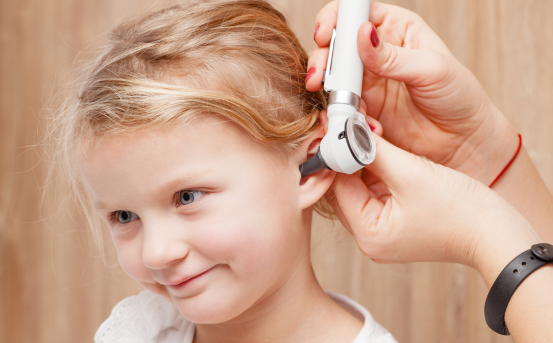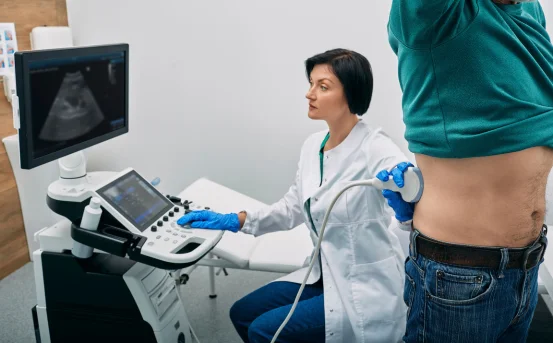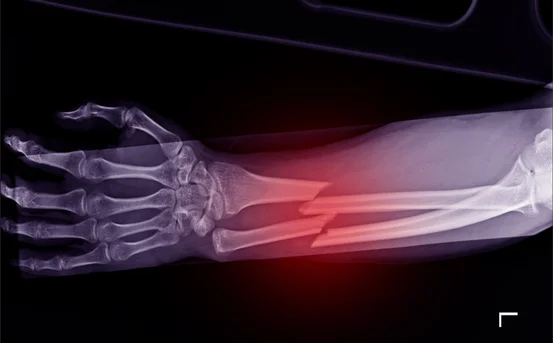Ear drum repair surgery, also known as tympanoplasty, is a surgical procedure performed to repair a perforated or damaged eardrum (tympanic membrane). A healthy eardrum is essential for good hearing and ear health. If left untreated, a perforated eardrum can lead to chronic ear infections, hearing loss, and other complications.
However, various factors like repeated ear infections, trauma, loud noise exposure, or sudden changes in pressure can cause the eardrum to rupture or become perforated. A perforated eardrum not only leads to hearing loss but also increases the risk of recurrent ear infections and persistent discharge from the ear. If the condition does not improve with medication or natural healing, doctors may recommend a surgical intervention known as ear drum repair surgery, or tympanoplasty.
What Is Ear Drum Repair Surgery?
Ear drum repair surgery (tympanoplasty) is a medical procedure that restores the integrity of the tympanic membrane. The eardrum is a thin membrane that vibrates when sound waves strike it, allowing you to hear. When the eardrum is perforated or ruptured due to trauma, infections, or repeated ear infections, it can affect hearing and make the ear more prone to infections.
A tympanoplasty helps close this hole and restore normal ear function.
Who Needs Tympanoplasty?
You may be advised to undergo ear drum repair surgery if you have :-
-
Chronic ear infections
-
A ruptured or perforated eardrum that hasn’t healed naturally
-
Hearing loss due to eardrum damage
-
Recurrent middle ear infections (otitis media)
-
Trauma to the ear or skull
Typically, doctors recommend tympanoplasty if the perforation hasn’t healed within 3 months and is causing discomfort or hearing issues.
Common Causes of Ear Drum Damage
Understanding what causes a perforated eardrum can help in early detection and prevention. Common causes include :-
-
Middle ear infections (otitis media)
-
Injury to the ear (e.g., inserting sharp objects like cotton swabs)
-
Barotrauma (sudden pressure changes, such as during air travel)
-
Loud noises or blasts (acoustic trauma)
-
Sudden head trauma or skull fracture
Types of Tympanoplasty
There are different types of ear drum repair surgeries, depending on the extent of damage and whether other parts of the ear are affected.
-
Type I Tympanoplasty (Myringoplasty)
-
Repairs only the eardrum.
-
Suitable for patients with no middle ear bone damage.
-
-
Type II–V Tympanoplasty
-
Repairs both the eardrum and ostioles (tiny bones in the middle ear).
-
Required in more complex or chronic cases.
-
How Is Ear Drum Repair Surgery Performed?
The procedure is generally performed under general or local anesthesia and can take 1–2 hours, depending on complexity.
Surgical Procedure :-
-
Incision :- The surgeon makes an incision either behind the ear or within the ear canal.
-
Graft Preparation :- A tissue graft is taken, usually from the patient’s own body (e.g., fascia from the muscle).
-
Eardrum Repair :- The graft is placed over the hole in the eardrum.
-
Closure :- The incision is closed, and packing is placed in the ear canal.
Tympanoplasty is often done as a day-care procedure, allowing patients to go home the same day.
Recovery After Tympanoplasty
Recovery from ear drum repair surgery usually takes 2 to 4 weeks, during which the graft heals and the ear regains function.
What to Expect :-
-
Mild pain or discomfort for a few days
-
Temporary hearing loss due to packing material in the ear
-
Avoid getting water into the ear during recovery
-
Regular follow-up to monitor healing and remove packing
Post-Operative Tips :-
-
Avoid blowing your nose forcefully
-
Keep the ear dry and protected from water
-
Avoid strenuous activities and heavy lifting
-
Take prescribed antibiotics and pain relievers
Most patients report significant hearing improvement after complete healing.
Risks and Complications
As with any surgical procedure, tympanoplasty has some risks, although they are rare :-
-
Bleeding or infection
-
Persistent perforation if the graft fails
-
Dizziness or vertigo
-
Tinnitus (ringing in the ears)
-
Change in taste (due to nerve proximity)
-
Hearing loss (in very rare cases)
Choosing an experienced ENT surgeon can help minimize these risks.
Benefits of Ear Drum Repair Surgery
The surgery provides several long-term benefits :-
-
Improved hearing
-
Reduced risk of ear infections
-
Relief from chronic ear discharge
-
Protection of middle and inner ear structures
-
Enhanced quality of life and daily communication
Tympanoplasty Success Rate
The success rate of tympanoplasty is very high, especially when performed by a skilled ENT specialist. Most studies show a success rate of 85%–95%, with significant improvement in hearing and long-term ear health.
Success depends on :-
-
Patient’s age and overall health
-
Size and duration of the perforation
-
Presence of other ear problems
-
Surgical technique used
Choosing the Right ENT Surgeon and Hospital
When considering tympanoplasty, it’s crucial to select a qualified ENT specialist and a reputed hospital that offers :-
-
Experienced otolaryngologists
-
Modern endoscopic equipment
-
Affordable packages
-
Pre- and post-operative care
-
Patient-centric support
Look for patient testimonials, hospital accreditations, and doctor experience before making your choice.
Conclusion
Ear drum repair surgery is a safe and effective solution for chronic ear infections and hearing loss caused by a ruptured eardrum. It not only improves hearing but also protects the ear from future infections and damage.























